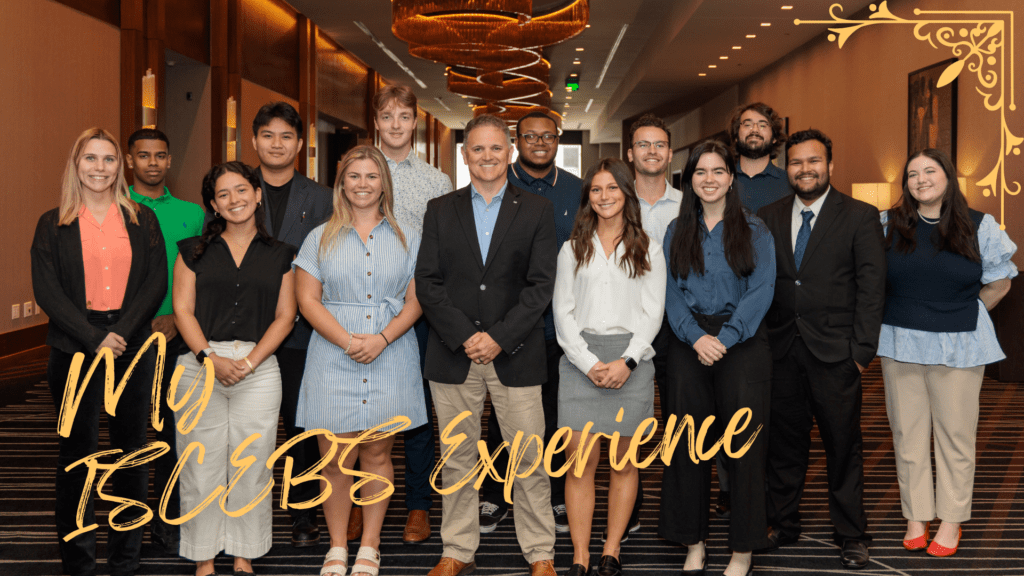
A few weeks ago, I had the incredible opportunity to attend the ISCEBS (International Society of Certified Employee Benefits Specialists) conference in Nashville, Tennessee, where I was able to explore my interests in employee benefits. Initially, I wasn’t sure what to expect. During my internship last summer, I had a brief introduction to benefits, focusing primarily on retirement benefits like 401(k)s. However, I was unprepared for the wide variety of topics related to employee benefits that would unfold before me in Nashville, particularly in the area of healthcare.
Some of the most interesting sessions that I attended were “Navigating Neurodiversity in the Workplace” and “Gene Therapies are Here: How to Support Patients and Manage Risks.” These sessions captivated my interests because I had only ever considered these concepts as challenges employees faced, without any practical solutions in the workplace. I never knew that solutions to these problems could be included in benefits packages, and it was interesting to see companies implementing them in ways I had not thought about prior.
In the session “Gene Therapies are Here: How to Support Patients and Manage Risks”, I was able to learn about how AT&T is supporting current employees with cell and gene therapies, which is a significant investment. In this session I was also able to learn about the risks associated with these gene therapies. Some of these risks included selecting the wrong provider, providing the patient adequate support for travel and complex care needs, and the high prices that are often associated with this kind of care. The speaker did a wonderful job laying out these potential risks, especially since many companies do not have the resources to mitigate these costs. AT&T’s solution to these risks were to bundle therapy and facility costs at pre-negotiated and discounted rates and to limit coverage to Centers of Excellence (COE) that meet financial standards. By bundling therapy and facility costs at pre negotiated and discounted rates, companies like AT&T can reduce the financial burden on employees and the company.
Additionally, limiting coverage to COEs helps to ensure that employees receive treatment from highly qualified providers who specialize in gene therapies. This can greatly reduce the risk of selecting the wrong provider, which can help employees ensure quality care and avoid poor treatment options. These mitigators furthered my understanding of how benefits packages can enhance a company’s commitment to employee well-being. I never knew just how comprehensive healthcare benefits could be and how many solutions there are available to help employees become their best and healthiest selves. A notable moment was when an attendee asked about what would happen if potential employees used these benefits and then left soon after receiving this treatment. The speaker highlighted that all companies offer healthcare benefits to promote physical well-being. Therefore, if an employee leaves after utilizing these benefits, AT&T is likely to attract talent from other organizations where employees have also benefited from their healthcare plans and have left shortly after. He explained that this is an acceptable practice since it should be the company’s goal to help employees become their healthiest selves. Most employees will likely stay with a company if they are satisfied with this care, and if they are not, a new employee will come later who is. This idea changed my perspective on how benefits can vary in effectiveness based on individual circumstances and company policies. The speaker emphasized the idea that fostering employee well-being should be a universal goal in benefits packages, regardless of employee turnover, which I found to be a comforting message to leave the session with.
The other session that really piqued my interest was “Navigating Neurodiversity in the Workplace”. As I am more exposed to the workforce, I meet more and more people who would consider themselves to be neurodivergent but often do not feel comfortable openly expressing this part of their identities at work. Again, I was surprised by this topic because I had never considered how benefits can help solve certain challenges that neurodivergent individuals may face at work. Upon further reflection, I realized that not every company adequately supports neurodivergent employees, so having solutions to these challenges in benefits packages is a necessity. Therefore, it is crucial that we advocate for accommodating workplaces and recognize this support as a necessary benefit as organizations evolve.
For instance, the speaker gave different examples of triggers that neurodivergent people may face in workspaces and how to mitigate these triggers or eliminate them altogether. One that stood out to me the most was hot seating as this became really popular after the pandemic. I was easily able to relate this to my on-campus job since our office hired many new employees after the pandemic, even though we lack sufficient space to accommodate everyone. To address this issue, we adopted a hybrid work model. However, this means that each day, when you come into the office, your seating arrangement changes, as employees have the flexibility to choose whether to work in-person or remotely on any given day. I did not realize how overstimulating and stressful this process may be for neurodivergent people especially upon coming into work every morning.
Along with this, I learned about some techniques that make the office less overstimulating and stressful to be in such as creating sensory friendly areas, designating areas for movement, and allowing for sensory regulation tools such as headphones. I also found it helpful when the speaker clarified what fell under neurodiversity categories and what did not. This distinction is crucial because it allows for a more in-depth understanding of neurodiversity, encompassing a range of conditions such as autism, ADHD, dyslexia, and others. I didn’t realize that conditions like dysgraphia and dyscalculia fell under the neurodiversity spectrum, despite having friends diagnosed with these conditions. Learning about these distinctions made me feel like a better ally and a more well-rounded HR professional. By highlighting these specifics, the speaker emphasized that neurodiversity is not a uniform concept, but rather a spectrum of experiences and needs. By making workspaces more accessible and less overstimulating for neurodivergent people, they become more comfortable for all of us to enjoy.
Overall, my experience at the ISCEBS Symposium opened my eyes to the evolving world of employee benefits, especially in the areas of healthcare and neurodiversity. The sessions I attended challenged my previous ideas about what support for employees should look like in their benefits packages. It is clear that as organizations strive to support their workforce, the incorporation of comprehensive and compassionate benefits will be crucial in creating environments where all employees can thrive, benefiting both individuals and companies.
